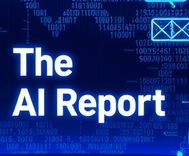NASA Partnerships Allow Artificial Intelligence to Predict Solar Events

The AI Report
Daily AI, ML, LLM and agents news
Last year, stunning auroras painted the night sky across North America, a breathtaking display of Earth's interaction with the Sun. Yet, behind this cosmic beauty lies a powerful force capable of disrupting the very satellite systems our modern world relies upon. How do we harness the wonder of space without falling victim to its unpredictable nature?
The Challenge: Protecting Our Digital Lifelines
The solar activity responsible for these dazzling light shows can unleash geomagnetic storms that interfere with critical space-based infrastructure. Satellites, essential for everything from GPS navigation to global communication, become vulnerable. The challenge is clear: we need to predict these events to protect our digital lifelines and ensure seamless operation on Earth.
A New Frontier: AI in Space Weather Prediction
Enter artificial intelligence. NASA's Frontier Development Lab (FDL), a dynamic partnership between the agency and leading commercial AI firms, is pioneering the application of advanced machine learning to tackle complex problems. Since 2016, FDL has channeled AI's potential into diverse fields, from planetary defense to Earth science and, critically, heliophysics – the study of the Sun.
From Financial Markets to Solar Storms
One remarkable FDL collaboration involved KX Systems, a company renowned for its kdb+ data analytics software, typically used in the fast-paced financial industry. The question posed was ambitious: Could software designed for market trends predict the turbulent 'space weather' that creates auroras and threatens satellite stability?
Predictive Power: 24 Hours Ahead
Between 2017 and 2019, KX Systems worked closely with NASA scientists at Ames Research Center. By feeding kdb+ extensive datasets – monitoring the ionosphere, solar activity, and Earth's magnetic field – and applying sophisticated machine learning algorithms, researchers achieved a breakthrough. They developed the capability to predict disruptive solar events up to 24 hours in advance. This foresight offers a crucial window for satellite operators to take protective measures.
Beyond Space: Earthly Impact of Innovation
The benefits of this partnership extend far beyond satellite protection. KX Systems reports that developments from their work with NASA have found their way back into commercial offerings. The AI models refined for tracking satellite signal losses share striking similarities with those used to predict maintenance needs for industrial manufacturing equipment. This demonstrates a potent feedback loop: space innovation drives commercial advancements, which in turn benefit everyday industries.
The Value of Collaboration
This initiative underscores the immense value of public-private partnerships. By merging NASA’s deep scientific expertise and long-term vision with commercial ingenuity and cutting-edge technology, we unlock solutions that protect our infrastructure, advance our understanding of the cosmos, and even enhance operational efficiency in unexpected sectors. It’s a testament to how investment in space exploration yields tangible, practical returns here on Earth.
Looking Forward
Consider the ripple effect of such collaborations. Every advance in our understanding of space, every technological leap, holds the potential for transformative impact across our planet. How might you apply a similar collaborative spirit to challenges in your own field? The future of innovation often lies at the intersection of diverse disciplines and shared ambitions.

The AI Report
Author bio: Daily AI, ML, LLM and agents news
